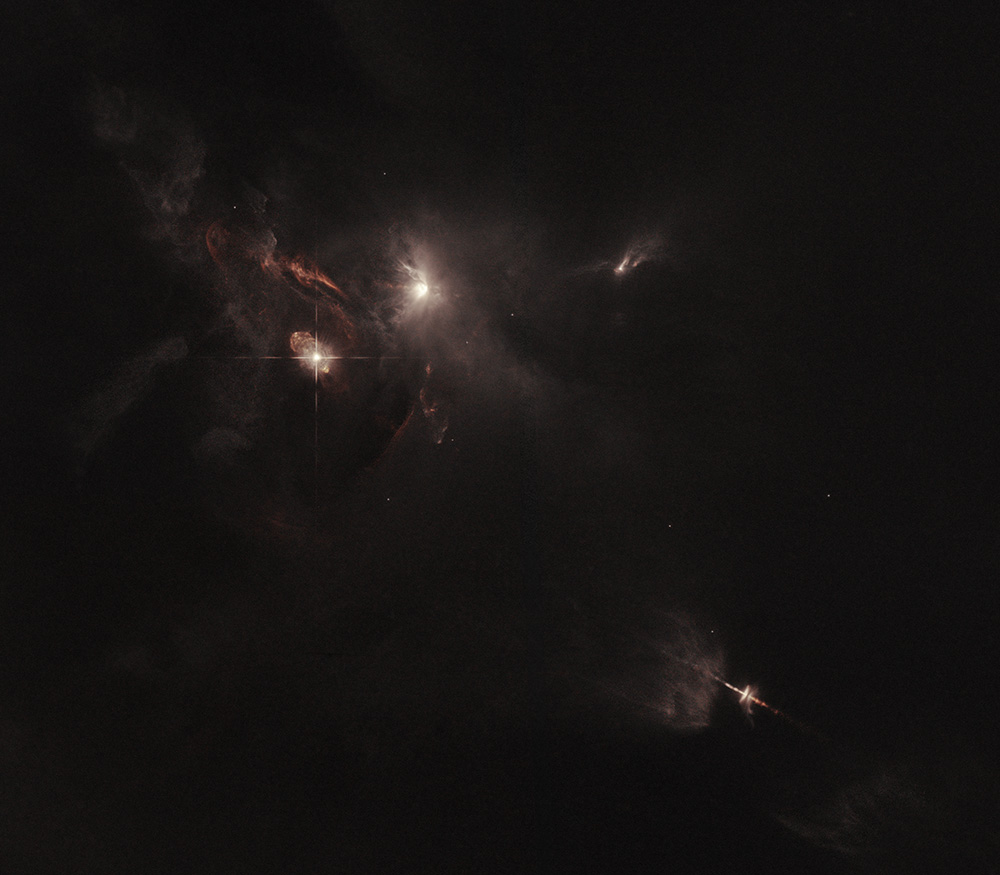
Variable Stars of Taurus (2014)
This is one of those beautiful clouds of dust with stars peeking out, forming, and interacting with it in various ways. It’s a small cloud located about 2° NW of Aldebaran. For context you can see the cloud in this image on the right. It is the first dark reddish puff of dust closest to the bright yellow star in the lower right corner.
If you could watch it over many years, you would see that red jet emanating from HL Tauri in the upper center blow onwards, pushing around the dust with it. You’d notice the T Tauri variable stars XZ Tauri on the left flare violently. Dual jets would continue to flow from the interesting object in the lower right. Over thousands of years, perhaps the dust will disperse to reveal a small cluster of young stars.
This polarized version of HL Tauri was put together so that I could use a sliver of it to help fill in the chip gap on this. I did that and I also interpolated (read: made up) data for the rest of the chip gap. Hubble processing woes.
This is reprocessed data of an image I already did which won 3rd place in the Hidden Treasures contest which spawned this hobby of mine. See previous version here.
Red filter (F625W) was placed into all three channels to form a grayscale image. Upon that, H-alpha data was overlaid in red, orange, and yellow hues. I think this looks more realistic than my previous version which simply used a red, pseudogreen, and blue scheme, though it was probably easier to differentiate the H-alpha from the red light in that version.
Red: HST_9863_01_ACS_WFC_F625W_sci +HST_9863_01_ACS_WFC_F658N_sci
Green: HST_9863_01_ACS_WFC_F625W_sci +HST_9863_01_ACS_WFC_F658N_sci
Blue: HST_9863_01_ACS_WFC_F625W_sci
North is NOT up. It is 30.1° counter-clockwise from up.
Copyright information:
Hubble data is public domain, but I put a lot of work into combining it into beautiful color images. The minimal credit line should read: NASA / ESA / J. Schmidt

This work is licensed under a Creative Commons Attribution 3.0 Unported License.


